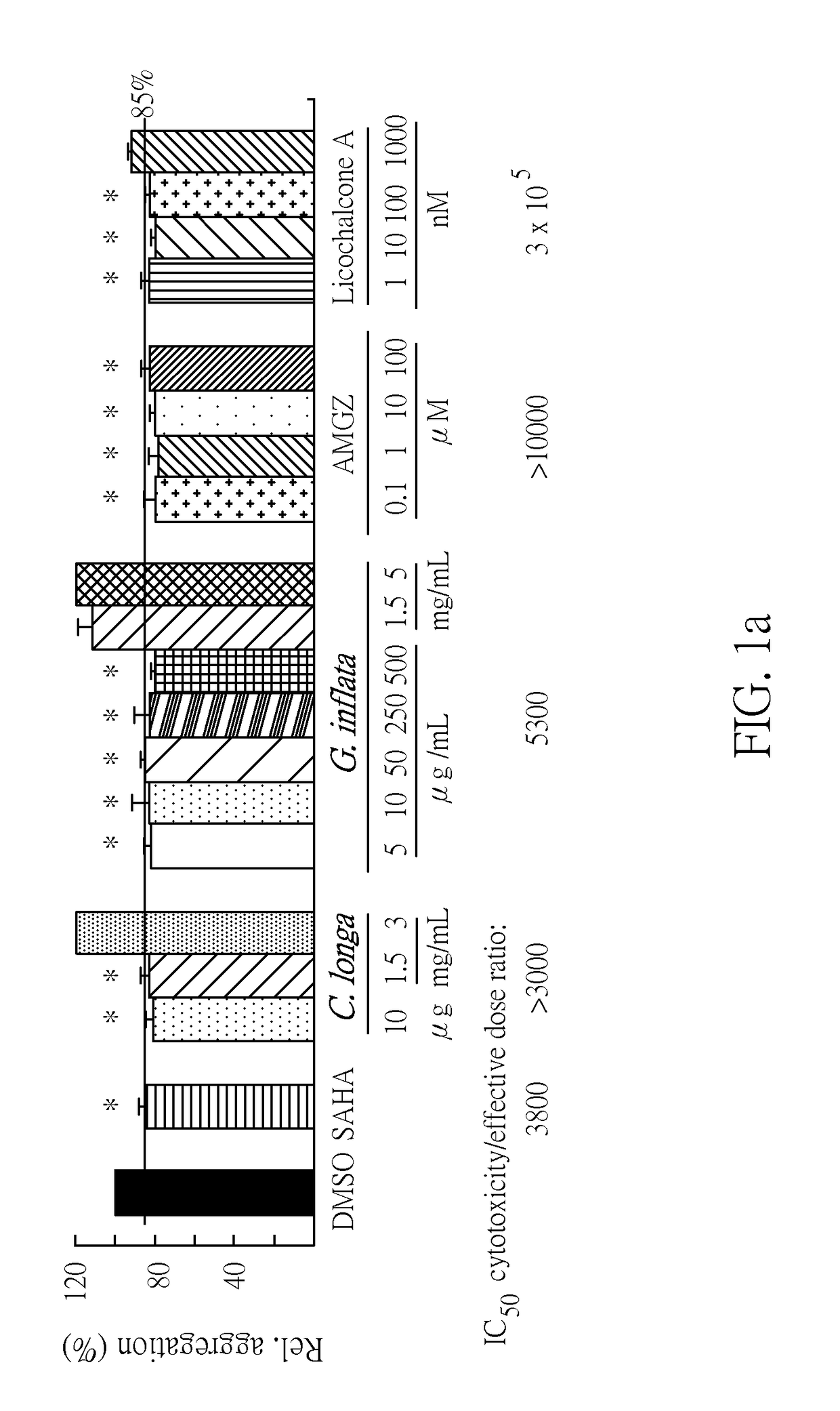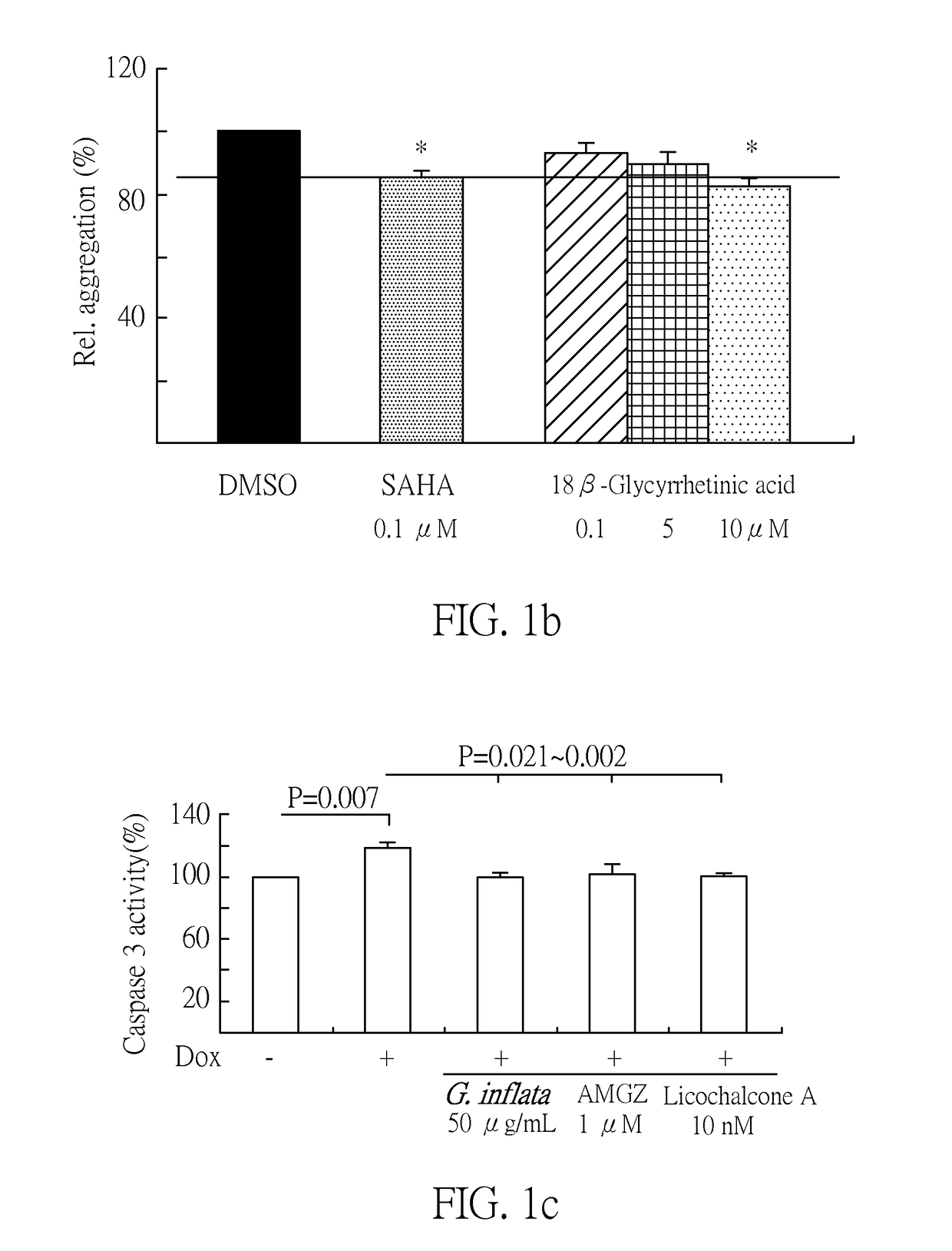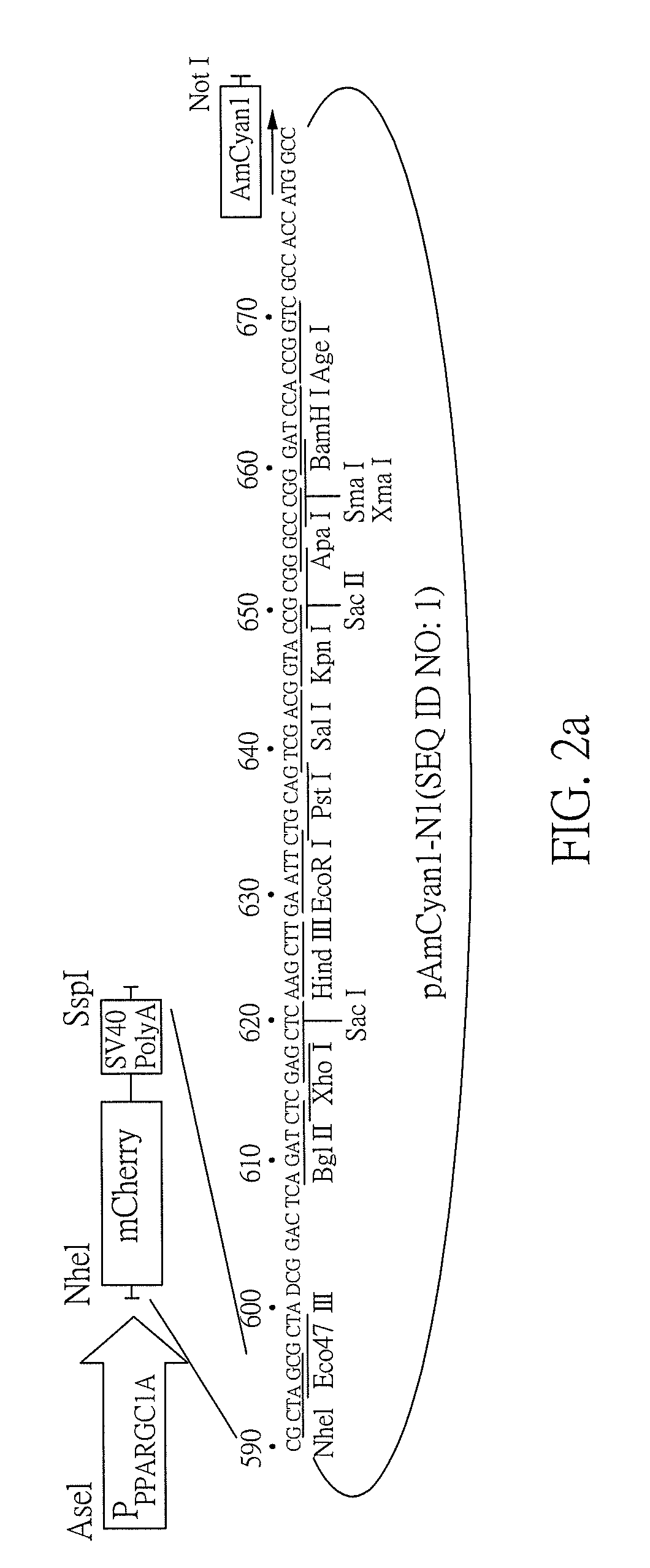Method for inhibiting neuronal cell aggregation
a neuronal cell and aggregation technology, applied in the field of glycyrrhiza inflata, can solve problems such as cell death, achieve the effects of enhancing mitochondrial biogenesis, reducing reactive oxygen species (ros), and increasing reactive oxygen species
- Summary
- Abstract
- Description
- Claims
- Application Information
AI Technical Summary
Benefits of technology
Problems solved by technology
Method used
Image
Examples
example 1
G. inflata Extract and its Constituents Reduce ATXN3 / Q75 Aggregation on 293 Cell Model
[0081]An ATXN3 / Q75 cell model was used to test G. inflata extract and its constituents for their potentials to reduce the ATXN3 / Q75 aggregation. HDAC (histone deacetylase) inhibitor, SAHA, known to reduce SDS-insoluble polyQ aggregates and extract of C. longa were included for comparison. As a positive control, SAHA reduced the ATXN3 / Q75 aggregation to 85% (at 100 nM) as compared to untreated cells (FIG. 1a). Additional to good aggregation-inhibitory potential seen with C. longa extract (81˜83% at 10˜1500 μg / mL), G. inflata (80˜85% at 5˜500 μg / mL), AMGZ (78˜83% at 0.1˜100 μM) and licochalcone A (80˜84% at 1˜100 nM) also had greater aggregation reduction potential than SAHA. The IC50 cytotoxicity / effective (reduced the ATXN3 / Q75 aggregation to 85% or lower) dose ratio of SAHA, extract of C. longa, extract of G. inflata, AMGZ and licochalcone A were 3800, >3000, 5300, >10000, and 3×105, respectively....
example 2
G. inflata Extract and its Constituents Enhance PPARGC1A Expression on 293 Cells
[0083]A fluorescent reporter 293 cell model with mCherry reporter downstream of PPARGC1A promoter (FIG. 2a) was established to examine the potential of G. inflata extract and its constituents to enhance PPARGC1A expression. As shown in FIG. 2b, treatment of AICAR (100˜250 μM), an AMPK activator that increases PPARGC1A mRNA expression, for one day significantly increased PPARGC1A promoter activity (119˜113%, P=0.004˜0.036). This is also true for C. longa (3˜15 mg / mL), G. inflata (3˜15 mg / mL), AMGZ (160˜400 μM) and licochalcone A (1.2˜3 μM) treatments, with 118˜169% (P=0.044˜0.002), 126˜190% (P=0.037˜0.004), 113˜147% (P=0.047˜0.013) and 126˜148% (P=0.028˜0.008) of PPARGC1A promoter activities compared to no treatment.
example 3
G. inflata Extract and its Constituents Enhanced PPARGC1A, NFE2L2, HMOX1, NQO1, SOD2, CYCS, GCLC and GSTP1 Expression on 293 ATXN3 / Q75 Cell Model
[0084]To examine if AMGZ, licochalcone A and G. inflata extract up-regulated the PPARGC1A and downstream genes functioning in mitochondria biogenesis and antioxidation in ATXN3 / Q75 293 cells, we compared the mRNA expression levels of PPARGC1A, NFE2L2, HMOX1, NQO1, SOD2 and CYCS between with and without AMGZ / licochalcone A / G. inflata and / or Dox treatment. As shown in FIG. 3a, induced expression of ATXN3 / Q75 for 6 days significantly attenuated the mRNA expression of PPARGC1A (83%, P=0.010), NFE2L2 (83%, P=0.005), HMOX1 (79%, P=0.016), NQO1 (74%, P=0.026), SOD2 (76%, P=0.003) and CYCS (85%, P=0.034). This reduction can be rescued by the addition of G. inflata (500 μg / mL), AMGZ (1 μM) or licochalcone A (10 nM), with significantly increased PPARGC1A (104˜113%, P=0.028˜0.011), NFE2L2 (123˜133%, P=0.031˜0.000), HMOX1 (432˜649%, P=0.012˜0.000), NQO...
PUM
 Login to View More
Login to View More Abstract
Description
Claims
Application Information
 Login to View More
Login to View More - R&D
- Intellectual Property
- Life Sciences
- Materials
- Tech Scout
- Unparalleled Data Quality
- Higher Quality Content
- 60% Fewer Hallucinations
Browse by: Latest US Patents, China's latest patents, Technical Efficacy Thesaurus, Application Domain, Technology Topic, Popular Technical Reports.
© 2025 PatSnap. All rights reserved.Legal|Privacy policy|Modern Slavery Act Transparency Statement|Sitemap|About US| Contact US: help@patsnap.com



